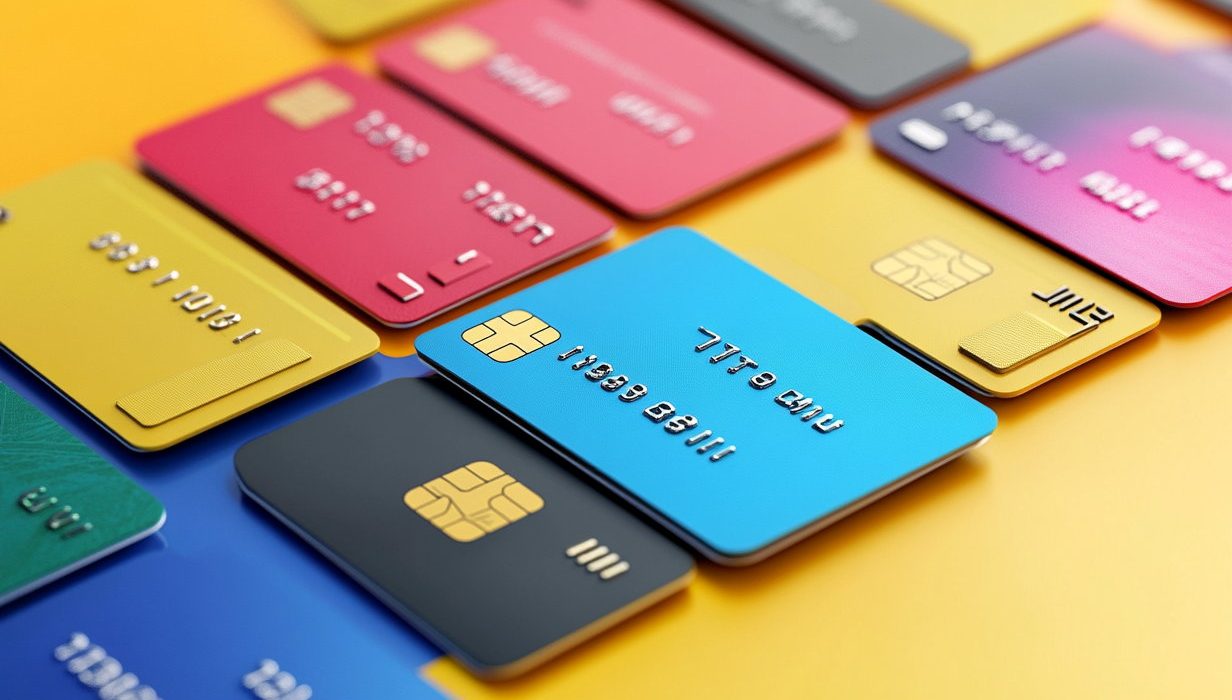Although you typically can’t use one credit card to pay off another, there are ways of doing so indirectly—usually with a balance transfer card. You can also take out a cash advance on one credit card to pay another, however this method is not recommended. It can easily become the last straw that sends a snowballing debt load out of control.
Even if a balance transfer card or cash advance isn’t the right approach, other options can help pay down your credit card debt. These include negotiating with your credit card issuer, taking out a personal loan or making lump-sum payments to settle your existing debt.
Can You Pay Your Credit Card Bill With Another Credit Card?
Paying off one credit balance using another card isn’t generally possible. Banks don’t allow you to pay your credit card balance directly using another credit card. Typically, payments via check, electronic bank transfer or money order are the only acceptable payment methods.
One loophole is a balance transfer credit card but there are other options.
Ways To Pay Off One Credit Card With Another
Balance Transfer Credit Card
As the name suggests, balance transfer credit cards offer special balance transfer offers when you first open the account. Depending on your creditworthiness, this may be a 0% intro APR offer or a very low interest APR, and it’s the closest you can get to paying off one credit card with another credit card, in the literal sense.
Once approved for a balance transfer, your card provider will issue payment to the credit card with outstanding debt. In most cases, you will also pay a balance transfer fee.
Make sure you read the fine print. Evaluate and include the fees when calculating how much a balance transfer could save you in interest. Transferring a balance is usually not permissible if the cards share the same issuer. Also, unless your balance transfer credit card also came with a 0% introductory APR on purchases, any normal purchases will begin accruing interest immediately.
Cash Advances
Technically, you can use one credit card to pay off another by taking out a cash advance on another card, but this is a bad idea. When you borrow money against your line of credit, it’s typically at a much higher interest rate than the APR on your credit card purchases. Some cards may also charge a service fee of anywhere from 3% to 5% of the amount you’re withdrawing.
Interest on cash advances does not have the same grace period as credit card purchases, so you will begin paying interest immediately. Plus, if you withdraw the cash from an ATM, you’ll likely get socked with fees for that.
Why You Should Not Pay a Credit Card With a Credit Card
As previously stated, other than a balance transfer or cash advance, banks won’t allow you to pay your credit card bill with another credit card. But even if they did, it would be a dangerous move to try and cover the debt in one place by creating it in another. This could cause your debt load to become unmanageable and affect your credit and overall financial standing.
What To Consider Before Paying Off a Card With a Balance Transfer
A balance transfer offer is not a one-size-fits-all solution to paying off a credit card. There are several considerations to keep in mind.
Balance Transfer Fees
Balance transfer fees typically range from 3% to 5% of the amount being transferred. If you transfer $10,000 to a card with a 0% intro APR offer that charges a 3% balance transfer fee, you’ll add another $300 to your debt. It may make sense to choose a card with the lowest balance transfer fee possible.
Even if you must pay a balance transfer fee, it could still help you save money overall depending on how much debt you have, your card’s interest rate and how long you need to pay off your debt. It always makes sense to do the math for your situation before deciding.
For example, paying a $300 balance transfer fee, for the example above, makes sense on a high interest card. The interest on those charges could easily be over $1,750 if you’re committed to paying off the card early and can amount to several thousand if you make minimum payments. Just stick to a disciplined repayment plan to zero out your balance before the intro period ends; otherwise, you’ll begin accruing interest on any remaining balance at the regular APR.
You Can’t Pay Off One Card Using Another Card From the Same Bank
Banks make money when you pay interest and other fees and generally won’t allow you to pay off one card using another card from the same bank. If you’re interested in a balance transfer offer, your best bet is to shift the balance from one bank-issued card to one with a 0% intro APR offer from a different issuing bank.
Your Credit Score Matters
Although a balance transfer offer can give you a leg up on paying down your existing debt, the best balance transfer offers are typically reserved for those with strong credit scores. If you’re new to credit or have a less than stellar credit history, you might not qualify. Even those with excellent credit should be aware that every time you apply for a new line of credit, it can affect your credit score.
The 0% Intro Period Will End
Eventually, that introductory interest-free period will end. If you haven’t made much progress in paying off your debt, you could be stuck paying the full regular APR. Before transferring a balance to a new card, make sure you can pay it off within the 0% intro APR period.
Credit union credit cards are a great solution if you need to pay down debt but know you can’t pay off the full amount within the intro period.
You Don’t Know How Much Credit You’ll Get
If you’re looking to transfer a large amount of debt, there’s no guarantee you’ll be approved for the full amount on a new card. If you can only transfer a portion of your current balance, then you’re stuck with two card balances to keep track of and make payments on.
Alternatives to Balance Transfers
Although a balance transfer card can be an appealing way to tackle debt, there are other options.
- Paying off the debt in one lump sum would eliminate the need for a balance transfer.
- If you don’t have the extra cash on hand to pay your debt in a lump sum, a personal loan might help.
- You might be able to negotiate a payment plan or a lower interest rate directly with your credit card company. If you have extenuating circumstances like a job loss, contact your card provider to learn if you qualify for their credit card hardship program.
- Debt relief programs are available, but often carry fees, may affect your credit and require significant due diligence to ensure you work with a reputable company.
Paying Off a Credit Card With a Personal Loan
For those who qualify, a personal loan can be a more appealing option than a balance transfer for a few reasons. They often come with lower, ongoing interest rates than credit cards.
Personal loans are typically issued as a lump-sum payment so you can pay off the credit card issuer with the funds and then make monthly fixed payments to the lender. This can help your overall debt-to-available credit ratio and positively impact your credit score. Remember that if your credit isn’t great, you likely won’t qualify for the lowest rates on a personal loan.
What Happens if You Don’t Pay Your Credit Card?
Not paying your credit card bill could lead to a delinquent credit card account, which will have a damaging effect on your credit score. Most credit card companies give you 30 days before reporting your missed payment to the credit bureaus.
After several months (time varies by issuer) an account will be suspended or possibly even closed if no payments have been made. At this point, card issuers often send your account to collections. These negative marks remain on your credit report for up to seven years.
If you’re having trouble making credit card payments, contact your creditors to let them know the situation and see if you can work out a different payment plan. You may also want to contact a nonprofit credit counseling company, like credit.org, which is part of the National Foundation for Credit Counseling. A certified credit counselor can help you work through a debt management program at no cost to you and help you get back on track.
Bottom Line
Although you can’t simply use one credit card to pay off another, you might be able to take advantage of a balance transfer offer to lighten your debt load. But don’t rush to sign up for a new card with an introductory 0% APR offer before you weigh the pros and cons. If you don’t think a balance transfer is right for you, there are other options. While a cash advance on your credit card may sound tempting, we recommend you avoid it at all costs.







